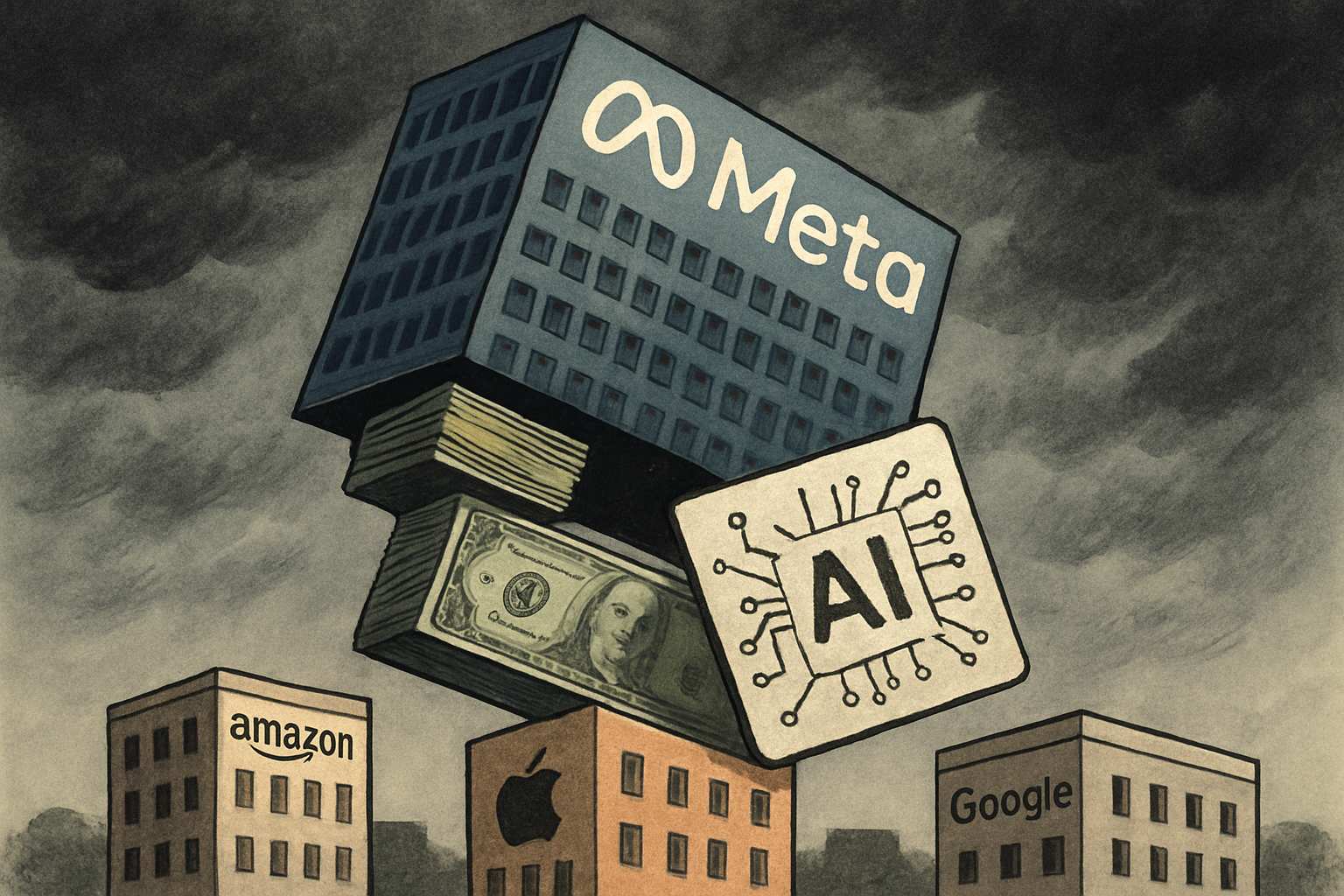
AI CERTS
1 day ago
Meta Faces Social Media Giant Pressure Over Costly AI Ambitions
Moreover, management lifted 2025 capital expenditure guidance to roughly $70-72 billion. Investors quickly focused on return timelines rather than top-line momentum. Consequently, Meta’s valuation now hinges on convincing evidence that AI investments will pay off soon. This article dissects the market reaction, spending plans, and future catalysts. It balances bullish and bearish perspectives for industry professionals. Finally, we highlight certification resources for leaders navigating similar AI commitments.
Stock Slide Explained Clearly
Meta opened at $733.41 on October 22 and traded near $594.25 one month later. That decline erased about $186 billion in market value. Furthermore, trading volumes spiked, signaling institutional rotation away from mega-cap tech.

Nevertheless, social media giant pressure forced management to defend its strategy on earnings calls. Market commentators blamed rising capex scrutiny and uncertainty about tangible AI revenue. Reuters framed the sell-off as a repricing of long-duration cash flows. Meanwhile, some bulls cited improved ad metrics as underappreciated positives.
In short, price action shows how quickly sentiment can flip on spending guidance. However, deeper cost details magnify that shift, as the next section explains.
Escalating AI Spend Concerns
Meta plans to pour at least $70 billion into servers, silicon, and data centers this year. Moreover, executives warned 2026 outlays will be "notably larger." This $70B spending justification became the focal point for bears overnight.
Consequently, sell-side models now discount higher depreciation, squeezing near-term GAAP margins. In contrast, management calls the surge essential to secure scarce AI compute. Such arguments echo leadership’s 2022 metaverse defense but arrive when macro conditions feel tighter. Additionally, social media giant pressure amplified these comparisons, especially among cautious portfolio managers.
Mounting Reality Labs Burden
Reality Labs losses widened again despite new Quest and glass launches. The unit burned $3.7 billion in the quarter, pushing the nine-month tally past $11 billion. Meanwhile, CFO Susan Li flagged more red ink as hardware scales.
Investors remember similar promises of future payoff during early VR spending waves. Therefore, sceptics link Reality Labs losses to fresh doubts about AI capital discipline. That linkage intensifies capex scrutiny across the broader infrastructure program.
Rising hardware deficits underscore why many view Meta’s risk profile as expanding. The debate over ROI now takes center stage.
ROI Debate Intensifies Now
Wall Street remains split on when AI lifts revenue enough to offset costs. Wedbush projects a 15% ad yield jump by late 2026. Nevertheless, Oppenheimer expects only mid-single-digit gains through 2027.
Meta argues that improved targeting already boosts impressions and price per ad. Furthermore, internal dashboards supposedly link algorithm upgrades to measurable advertiser return. Yet public disclosures lack precise attribution, leaving investor patience testing unresolved.
Financial modelling shows break-even arriving only if monetization accelerates beyond current run rates. Consequently, many analysts keep a neutral stance until clearer data emerges. Social media giant pressure therefore persists in brokerage reports and television interviews.
Divided ROI forecasts heighten volatility around each earnings update. Market comparisons offer additional context, as the next section discusses.
Market Comparisons Drawn Widely
Investors compare Meta’s spending curve with Microsoft, Google, and Amazon. In contrast, those peers monetize AI directly through cloud services and subscriptions. Therefore, their stock reactions stayed muted despite similar capital plans.
Brokers suggest capex scrutiny eases when revenue pathways feel immediate. Conversely, Meta leans on ad uplift, which depends on broader economic health. Such reliance prolongs investor patience testing, especially during advertising slowdowns.
Additionally, cross-company analysis highlights Meta’s heavier Reality Labs losses relative to group revenue. That metric fuels questions about $70B spending justification given uncertain hardware uptake. Nevertheless, bulls say internal control lowers latency and protects data.
Critical Funding Options Analyzed
Meta tapped debt markets with a $30 billion bond deal in early November. Moreover, management still buys back shares, signaling confidence in long-term cash flows. However, rating agencies watch leverage ratios closely as capex scales.
Some observers call the strategy creative, yet it heightens social media giant pressure around governance. They argue transparent metrics could soothe capex scrutiny while keeping flexibility intact. Professionals can enhance their expertise with the Chief AI Officer™ certification.
Financing tactics will matter if free cash flow turns negative. Upcoming events could shift that outlook.
Next Catalysts Loom Large
Meta reports fourth-quarter earnings in late January. Subsequently, the firm will issue formal 2026 capex guidance. Clearer timelines could relieve or magnify investor patience testing heading into spring.
Traders also track ad conversion metrics tied to new AI models. Concrete proof of uplift may justify $70B spending justification over time. Meanwhile, macro liquidity and bond spreads influence future debt placements.
- Q4 guidance on capex and expenses.
- Reported Reality Labs losses trajectory.
- Ad yield metrics tied to AI rollout.
- Major analyst rating changes.
- Bond market conditions influencing funding.
These catalysts will test Meta’s narrative in real time. The conclusion distills actionable lessons for leaders.
Meta’s recent slump reflects rising capital doubts, not weakening user metrics. However, social media giant pressure will intensify until tangible AI returns appear. Reality Labs losses, $70B spending justification, and relentless capex scrutiny dominate every analyst call. Consequently, investor patience testing could remain a headline risk throughout 2026. Yet, early ad uplift supports the bullish case. Meanwhile, proactive governance and transparent milestones may soften social media giant pressure over time. Therefore, executives across industries should assess capital payback rigorously before scaling AI. Leaders can explore the Chief AI Officer™ program to sharpen strategic AI oversight. Stay informed and transform spending into sustainable advantage. Act now before social media giant pressure shapes your own boardroom debates.



